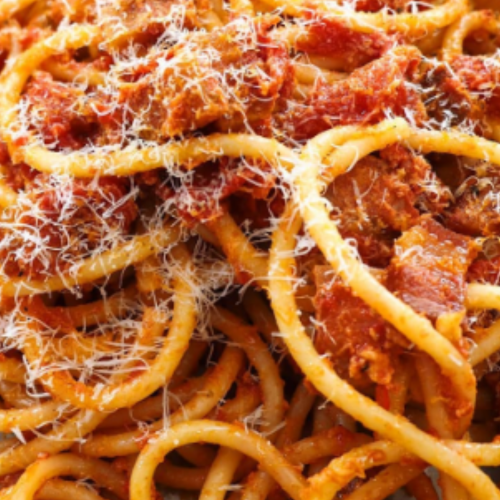Cook the Pasta
Start by bringing a large pot of salted water to a boil. Add the bucatini and cook according to package instructions until al dente (usually about 9-11 minutes). Reserve about 1 cup of the pasta water before draining the pasta. This will help adjust the sauce’s consistency later.
Prepare the Guanciale
In a large skillet over medium heat, add the diced guanciale (or pancetta). Cook for about 5-7 minutes, stirring occasionally until it becomes crispy and golden brown. If desired, you can add a splash of olive oil for extra flavor.
Add Aromatics
If using onion, add it to the skillet and cook until soft, about 2-3 minutes. For a little heat, add the red chili flakes at this stage.
Create the Sauce
Pour the canned tomatoes into the skillet with the guanciale. If using whole tomatoes, crush them with a wooden spoon. Season with salt and pepper. Let the sauce simmer for about 10 minutes, allowing the flavors to meld. If the sauce is too thick, add some reserved pasta water to reach your desired consistency.
Combine Pasta and Sauce
Once the pasta is done, add it directly to the skillet with the sauce. Toss to combine everything well, adding more pasta water if necessary. Stir in the grated Pecorino Romano cheese, mixing until it melts into the sauce.
Serve
Plate the pasta and garnish with additional Pecorino Romano cheese and a sprinkle of black pepper. Enjoy immediately!
Variations and Substitutions
Vegetarian Version: Replace guanciale with sautéed mushrooms or eggplant for a vegetarian twist.
Spicier: Increase the amount of red chili flakes or add a dash of hot sauce.
Dairy-Free: Use a dairy-free cheese alternative or omit cheese entirely for a lighter option.
Gluten-Free: Substitute bucatini with gluten-free pasta, such as lentil or chickpea-based varieties.
